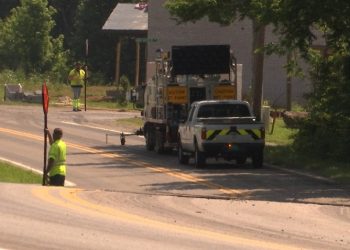HAMBLEN COUNTY, Tenn. — On Wednesday, the Tennessee Valley Authority (TVA) and the Tennessee Division of Forestry conducted a prescribed burn on approximately 30 to 40 acres of mostly grassland in Hamblen County. The burn, which is part of routine forest management, is intended to support the restoration of native species and reduce wildfire risks.
Jack Muncy, a forester and biologist with the TVA, explained that fire is used as a tool to bring back plants that have historical significance in the region. “We have established native warm-season grasses that were here during the buffalo era, or the bison era,” Muncy said. “By using fire, we are doing what Mother Nature would do, helping to reestablish this plant community.”
Prescribed burns, which are planned carefully under specific weather conditions, also serve multiple environmental benefits. In addition to promoting native species, these burns help clear out materials that could fuel wildfires. “We’ve allowed forests to become overgrown and unmanaged, leading to excessive fuel loading,” Muncy said. “When a wildfire occurs, this fuel can be catastrophic. One of the indirect benefits of prescribed burns is that they reduce these dangerous fuel loads.”
The conditions for performing a prescribed burn are highly dependent on the weather. During each burn, a forester tracks conditions such as relative humidity, wind speed, and temperature. Muncy noted that a relative humidity between 25-35% and winds of 5-7 miles per hour are ideal for controlled burns. If humidity drops too low, burning is no longer feasible.
Another key purpose of the prescribed burn is to combat the spread of invasive species. For example, the burn helps control the invasive hammerhead worm, which preys on earthworms that play a vital role in the local ecosystem. Without intervention, invasive species like the hammerhead worm could threaten the delicate balance of the region’s wildlife and plant life.
As part of ongoing land management efforts, the TVA and Tennessee Division of Forestry continue to use fire as a tool to enhance and protect the natural landscape, ensuring a healthier and more resilient ecosystem for years to come.













